
To further the brand’s efforts in bringing “diverse perspectives to design,” Nike and American tennis champion Serena Williams are tapping into emerging talents in New York City for a collaborative range of apparel and footwear slated for release throughout 2020.
Commencing on October 18, the program will see a whole range of New York City-based designers from various schools and institutions such as Harlem’s Fashion Row be invited to Nike’s headquarters in the city for a day of workshopping. The emerging designers will complete a series of tasks given to them by the Nike design teams, and following “a thorough selection process,” the group will be narrowed down to 10 designers. Those will then be invited to the Nike World Headquarters in January next year, where they’ll undertake a seven-month apprenticeship working closely on the capsule with Williams.
“I’m excited for these designers to hone their craft, expand their creativity and ultimately dream big as they build on Nike’s design legacy in creating for one of the greatest athletes of all time,” says Nike’s Chief Design Officer John Hoke. “We know their impact will be widely felt and look forward to having them as part of our creative community.”
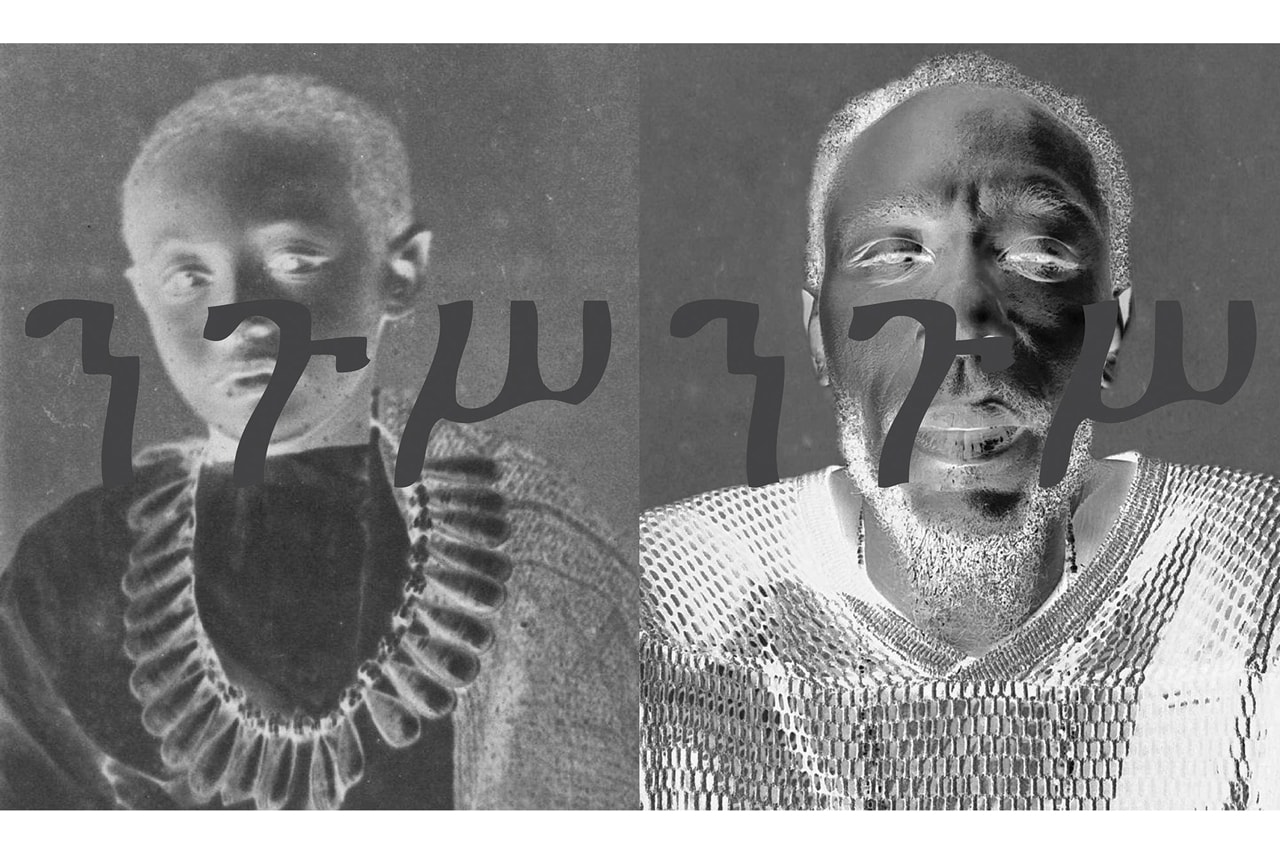
Brooklyn Museum will soon launch the U.S. debut of yasiin bey’s latest studio recording, ‘yasiin bey: Negus.’ The listening installation encompasses an eight-track, 28-minute recording “without the distractions of technology (upon entering the gallery, visitors are given a case in which to lock their mobile devices),” described the museum in a statement. Coinciding with the installation are original artworks by Ala Ebtekar, Julie Mehretu, and José Parlá. In addition, original music by celebrated pianist by Emahoy Tsegué-Maryam Guèbrou will also be on view.
The forthcoming presentation signals the 20th anniversary of bey’s most-iconic ‘Black on Both Sides’ album. The term ’Negus’ translates to “king” or “ruler” in Ge’ez, an ancient Semitic language of Ethiopia. The artist associates this term with those “who have led noble lives, including Henrietta Lacks and Nipsey Hussle,” as per a statement.
“yasiin bey: Negus” will be on view at Brooklyn Museum from November 15 until January 26, 2020.
Elsewhere in art, the MoMA recently unveiled photos of its $450 million USD expansion project in its New York City location.
Brooklyn Museum
200 Eastern Pkwy
Brooklyn, NY 11238
200 Eastern Pkwy
Brooklyn, NY 11238
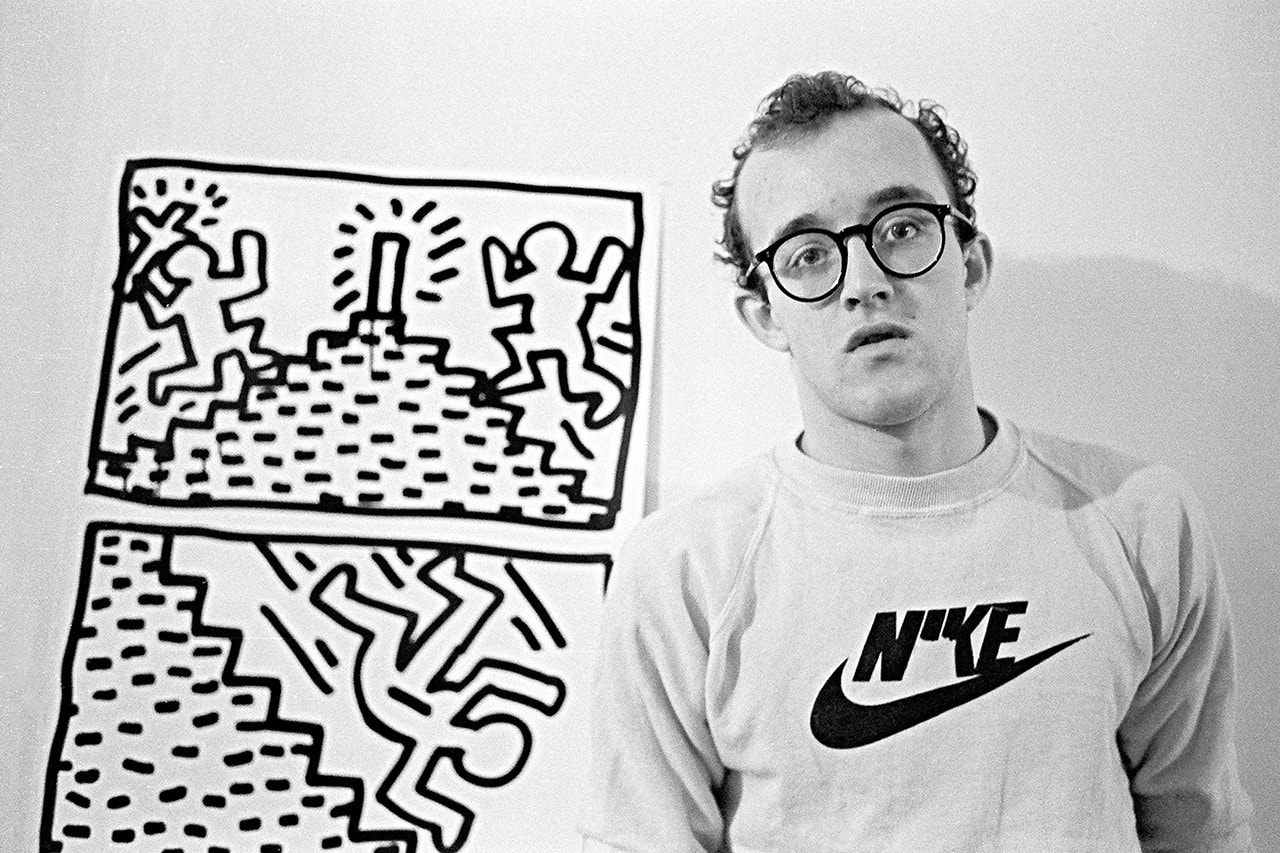
In 1983, Keith Haring started painting the inside of a stairwell in Grace House, a Catholic Youth Center on Manhattan’s Upper West Side. Haring’s figures took up three stories of the building, creating a massive 85-foot mural. That same mural will be auctioned off at Bonhams New York next month, where it is estimated to sell for $3 million to $5 million USD.
Described as a “lexicon of Haring’s vocabulary,” the monumental work includes some of the artist’s most iconic figures, such as the “Radiant Baby” and “Barking Dog.” “When new kids came to that building and they saw all that stuff, they said, ‘Oh my god, this is Keith Haring. Is this real?’” Gary Mallon, who was director of the youth center, said. “He had a can of black paint in his hand and a black, kind of a thick brush, and he just started with that radiant baby on the first floor and then just worked his way up. We followed him, and I remember saying, ‘Ooh, it’s dripping,’ and he said, ‘That’s O.K. It’s supposed to drip.’”
When Grace House eventually closed, the mural’s 13 figures were cut out and preserved into 15 separate sections. For the first time, Bonhams will auction Haring’s mural at its Post-War & Contemporary Art sale. This decision has raised questions on the future of the artwork; whether it will fall into a private collection or be brought into a museum.
The mural will be on view at Bonhams’ galleries from November 2 up until the auction on November 13. Visit the gallery at the address below.
Elsewhere, the second edition of SBI Art Auction and en one tokyo’s “Harajuku Auction” will include works from KAWS, Jeff Koons and more.
Bonhams New York
580 Madison Ave
New York, NY 10022
580 Madison Ave
New York, NY 10022
Keith Haring’s art is arguably amongst the most recognizable in the world. The late artist’s signature style, often described as playful and irreverent, is frequently seen in collaborations with fashion labels — adidas Originals, Lacoste and UNIQLO this year alone, alongside an ultra-rare Supreme release from 1998 — as well as on album covers, imitation graffiti and his large murals that are still visible around the world.
The various collaborations continue the work that Haring began during his lifetime. He was, for example, particularly focused on the democratisation of art. “He opened up the idea that art is a resource for every person, it is not rarified, it is communication.” explains Samantha McEwen, a close friend of Haring’s and a classmate at the School of Visual Arts in New York. “I think he wanted the works to be understood,” adds Darren Pih, who has co-curated an upcoming retrospective of Haring’s work at Tate Liverpool. “Fundamentally his work was for the people, he wanted to create symbols which spoke of and for his generation.”
While the style of Haring’s art is immediately recognizable and approachable, the way in which he frequently worked with brands and charities was a change from the art world’s traditional approach. During his life, Haring opened two stores selling merchandise (the Pop Shop opened in New York in 1986 and in Tokyo a year later), licensed his imagery to big name brands and worked with charities at no cost. “This is how Keith succeeded in putting his imagery and philosophy about art and charity out into the world,” adds Julia Gruen, Haring’s friend, studio manager and now, as Executive Director of the Keith Haring Foundation, the guardian of his legacy.
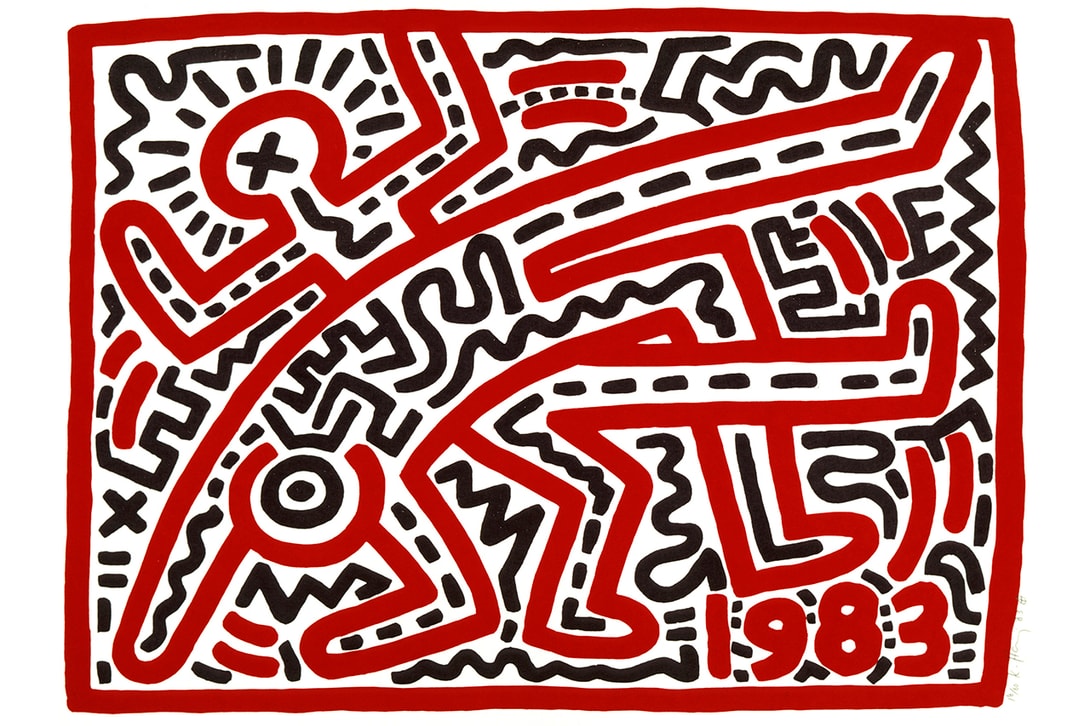
Untitled, 1983, Collection of the Keith Haring Foundation
The visibility and accessibility of Haring’s work saw him transcend the traditional art establishment — which often looked down on him — and create a connection with ordinary people. “I think he was very much accepted by the city, by all the most regular people going about their everyday lives,” remembers McEwen, “totally accepting his work as being for them, something they could understand. It was a clear message of interest in everyday life.”
Haring’s work is undoubtedly playful and accessible — two of the qualities that led to his brusque treatment by the art world– but his art also carries serious political and social messages. Some of his most important works dealt with the biggest issues of his time, including drug use, nuclear disarmament, and the spread of AIDS ,which would eventually claim his life in 1990 through a related illness. With his democratic style making it easier for the public to engage with his work than with stuffy, ‘traditional’ art, Haring had a platform to illuminate these issues.
“He opened up the idea that art is a resource for every person, it is not rarified, it is communication.”
“I think he was somebody who really used his fame, his platform, his profile to raise awareness of some of the most important social and political issues of the 1980s,” continues Pih, particularly referencing Haring handing out anti-nuclear posters in Central Park, as well as his work with the anti-apartheid movement and his AIDS-related activism after his own diagnosis. Raising awareness extended beyond just his art work. Speaking to The Observer recently, dancer Bill T. Jones — a friend and collaborator — explained that “everyone knew his sexuality, he was very out, which was important. And he would try and represent the young, underserved black and brown people of the streets, like the Central Park Five. The art world claimed to not know about such things – and its passivity, its silence was political – but because of the people he associated with, Keith was pulled into these issues.”
Continuing this, McEwen highlights Haring’s ability to communicate his message. “He put together this thinking about how to communicate,” she adds, “how to put on to paper what he was thinking. He had so many ideas that he found a way to communicate. I think most artists find a way to communicate maybe one or two main ideas, but Keith was communicating everything he thought about: money, politics, religion, sex, life, children. He found this way to draw what he was thinking.”
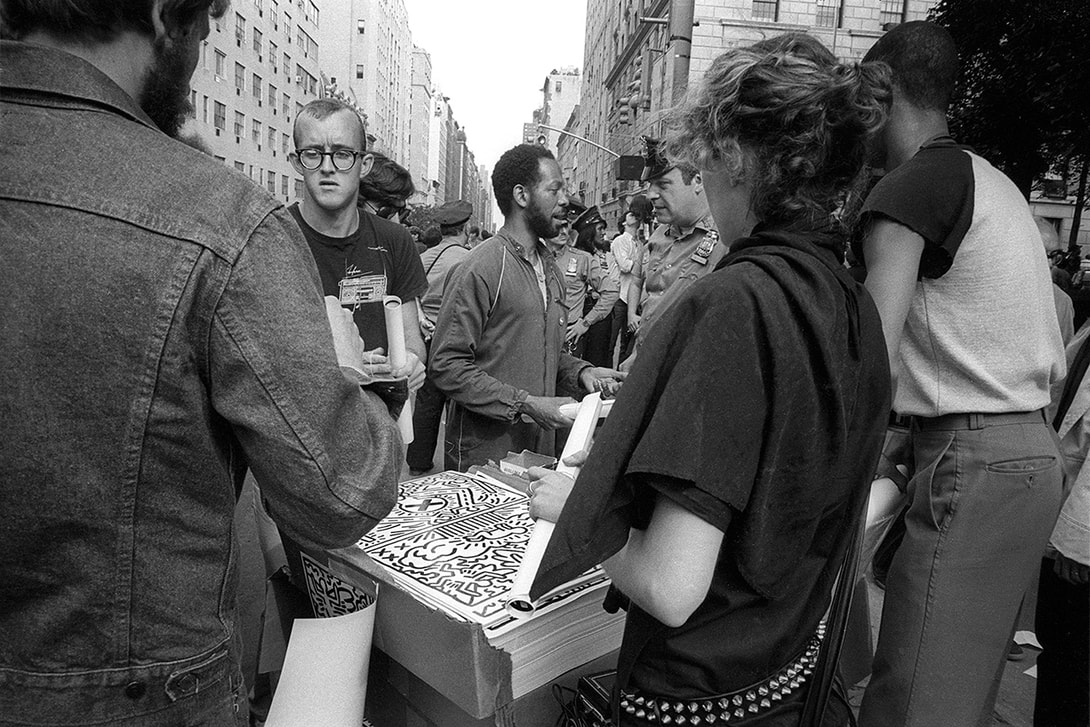
Joseph Szkodzinski, Keith Haring handing out No Nuke Posters at a No Nuke Rally, Central Park, NYC, 12 June 1982
Haring’s emergence into the New York art world represented the changing face of the scene, as younger artists took inspiration from the city around them. Speaking of Haring’s early years in New York, McEwen recalls a changing of the city’s guard. “There was a sense of rebelling against the establishment, especially when there was Keith [Haring] and Jean-Michel [Basquiat] and Kenny [Scharf], who were all interested in graffiti,” she recalls. “There was a big divide between the mainstream art and the kind of paintings that were being made there and then by the actual residents of the city. That was an incredible education in the changing of the guard. You’re younger so you’re not so involved with what is already established, and more open to what is actually happening right in front of you.”
This changing of the guard was also clear in Haring’s social and political awareness. The political and social messages in his work were often in contrast to government policy and action. In many ways, the urgency seen in his work — through its uncompromising messages and accessible style — were juxtaposed against the lackadaisical government response to the crises engulfing Haring’s generation. For Haring, it was important to inform as many people as possible about these issues. “He was somebody really who powerful who spread education,” explains Pih,” he was a real advocate against ignorance.”
The upcoming exhibition at Tate Liverpool is the latest stage of Haring’s admission to the art establishment. While Haring always exhibited in galleries, his work remains much more associated with the world at large. “He was making work on the subway while having exhibitions at museums, he was beginning to receive institutional recognition in his lifetime,” says Pih, adding that the exhibition at Tate will bridge the gap between the two worlds. Exhibits will cover everything from large paintings and drawings to graffiti-covered taxi hoods and street hoardings as well as flyers, magazines, record sleeves and videos to explain, as Pih continues, “the idea that he created a very messy texture that really shows that aesthetic of New York City in the 1980s. It will be an exhibition that tries to bridge the street energy of early ‘80s New York City.”
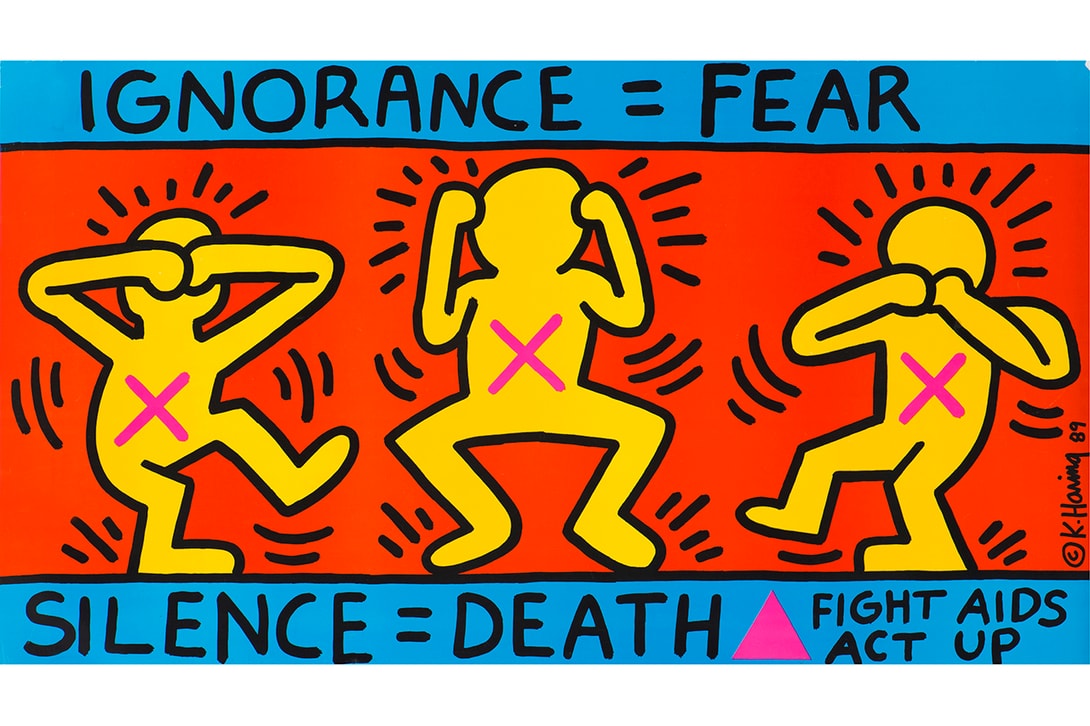
Ignorance = Fear, 1980, Collection Noirmontartproduction, Paris
These works that span so many mediums, from traditional artworks to practical objects, are key reasons why why Haring is still so adored. His art exists in the everyday and can be appreciated without a comprehensive understanding of art history and theory. In many ways the accessibility of Haring’s art was important for two reasons: it was a reminder that art is for all and it created a platform to spread his message.
Discussing the message of Haring’s work, Gruen describes “his commitment to addressing our society’s ills with his art; his insistence that art be accessible; the continuing power and influence of his life experiences and art to bring about change — i.e. with tolerance, compassion, humor, optimism.” As Gruen explains, this message has a “perpetual contemporaneity,” and Haring remains one of its most articulate messengers. As this week’s major UK gallery exhibition shows, the art world has finally caught up with Haring’s art and his message.
Tate Liverpool’s Keith Haring exhibition opens on June 14 and will run until November 10.
Tate Liverpool
Royal Albert Dock
Liverpool
L3 4BB
Royal Albert Dock
Liverpool
L3 4BB

No comments:
Post a Comment